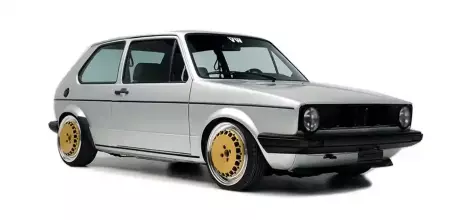260bhp 1.8-litre KR 16v engined 1982 Volkswagen Golf Mk1
When we first featured this iconic Mk1 Golf way back in 1999, it was like nothing we’d ever seen before. Almost a quarter of a century later, amazingly, the car still remains the GOAT. Here’s why…
Words: Elliott Roberts
Photos: Lennart Dijkstra
GREATEST OF ALL TIME
Since the magazine’s launch back in 1996, it’s safe to say we’ve featured some very special Mk1 Golfs in these pages. From Big Ron’s legendary Mk1 VR6 in Holland, to Danny Allen’s bright orange 16v from these very shores, there have been some absolutely mind-blowing creations over the years. If we had to pick just one though — the greatest of all time — then that title would undoubtably have to go to this rather special Mercedes Brilliant Silver example.
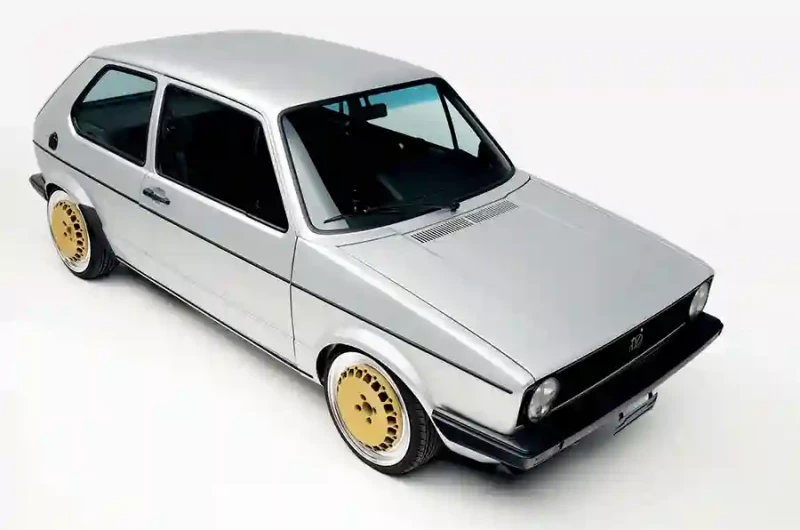
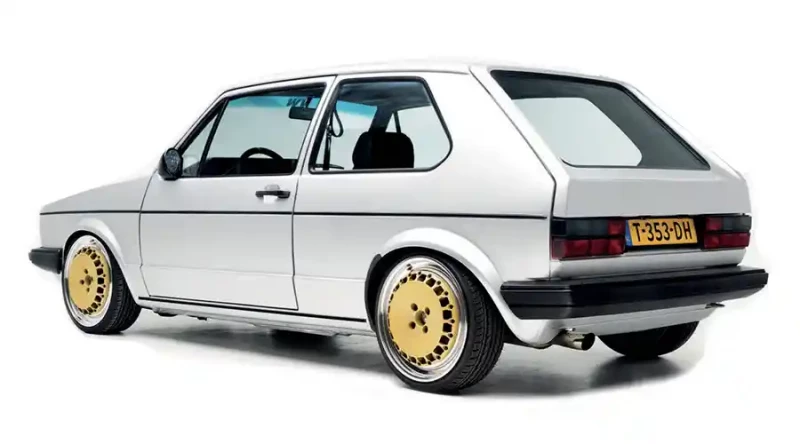
We first featured German, Marco Haeger’s unmistakable Mk1 way back in PVW 2/99 after spotting it at the previous year’s GTI Treffen in Baarlo, Holland. Quite frankly, nobody — including ourselves — had ever seen anything quite like it! We later revisited the car in 2005 for the cover feature of our 100th issue (PVW 2/05), where Marco had improved the ’82 Golf further while sticking with the original ‘less-is-more’ theme.
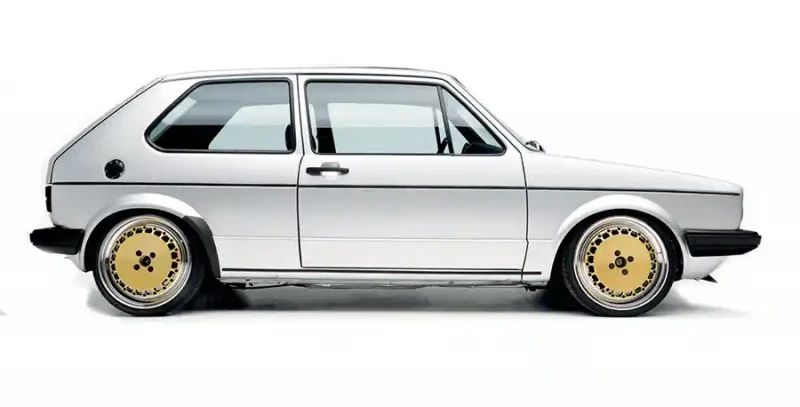
Fast forward to December 2023 and — almost 25 years since that very first feature — the car is back again to grace our cover. Despite appearing very similar, a lot has changed! Not only does the car have a new owner, new motor and new wheels, that’s just the start of the changes…
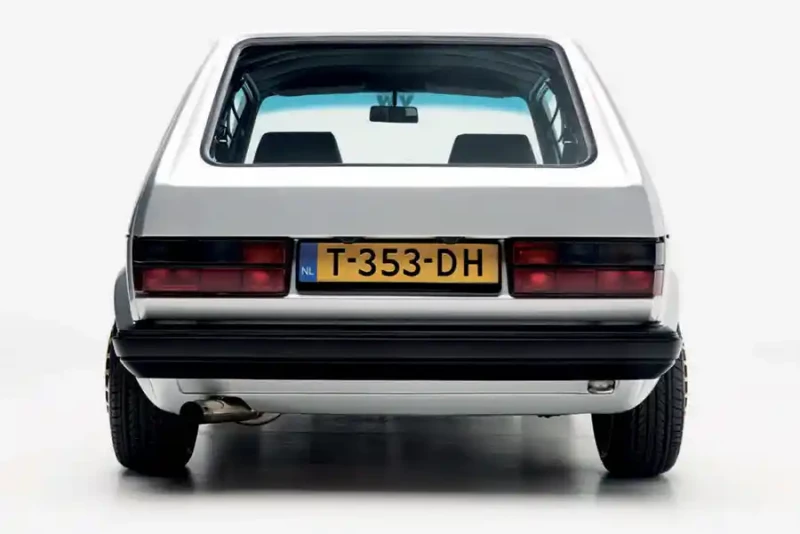
Right, where do we begin with this mythical creation and the story behind its latest incarnation? Firstly, I think it’s best we introduce the new owner, Michael Sloopmaker. You see, it’s important for us to get across that this isn’t just some guy who bought a legendary car, slung some new wheels on and claimed it as his own. Far from it!

“I recently drove 1200kms to a show in German and people asked if I’d trailer it"
“I’ve always loved this car,” the Dutchman told us. “I actually first saw it at the ’97 Dutch Treffen, in Baarlo when it was still painted the original Lasha Green. It already had the familiar 1.9-litre 8v on carbs fitted, but there was no chrome or polished details back then and the bay hadn’t been smoothed.” Apparently, it had blue Edition One electric Recaros (which would later be trimmed in black leather) and the car had flared wheel arches, but that was about it. “I guess you would say it was just a nice car at that stage.”
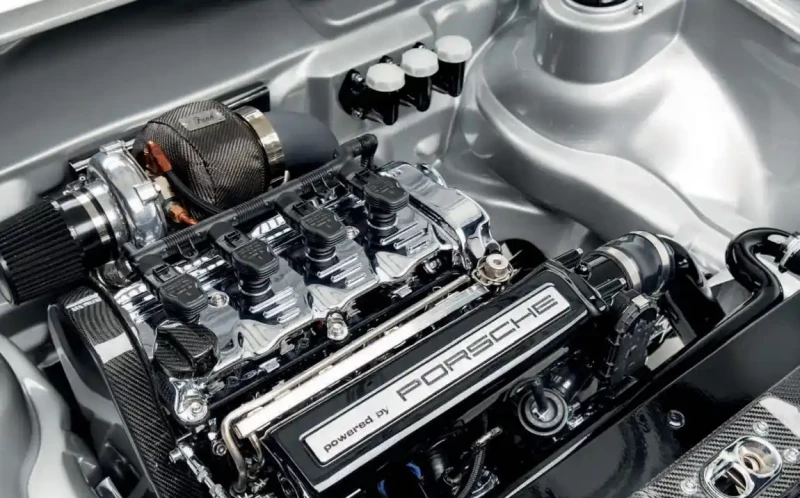
Fast forward 12 months and Michael, who is a Dutch member of the Westide Cartel, was back in Baarlo once again: “It was only my second time at the show,” he said. “I remember the sun was out — it was a perfect day and Marco rolled onto the short oval circuit in his Mk1 with his girlfriend by his side. The car was now f**king silver, with polished Ronal Turbos fitted… F**k me, I was in love with that car right away!” And that was before Michael had even looked under the bonnet…
“I was never too worried about making the car my own, or whether people called it Marco’s car. I just love owning it"
You see, during the winter of ’97, back in Germany, Marco and his good friends (including scene legend, Alex Schmidt) had totally stripped the car, smoothed the bay and painted the under side in the same Mercedes Brilliant Silver as the bodywork. The engine and all chassis components had either been polished or chromed, the seats had been retrimmed in black leather — it basically looked like a totally different car to the Mk1 Michael had first seen in ’97 — and it was literally leagues ahead of, not just anything at that show but, anything he’d ever seen before. Looking back at the car now, I guess it was as close to what the top Hot Rod guys were building across the pond, but in a base-spec European hatchback.
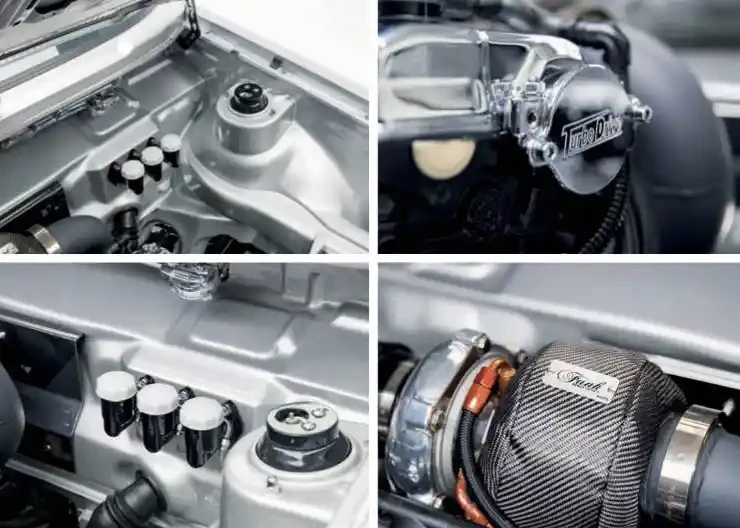
Despite the lashings of chrome surrounding the engine and all underneath the car, externally, the Mk1 was practically de-chromed, bar for the highly polished 15” phase 1 Ronal Turbo wheels. On first impressions, it looked like a super clean, base-spec Mk1 on wheels. Of course, as we soon discovered, what was hidden beneath was anything but ‘base spec’! Well, our raving reporter, Mick Clements (remember him? — All) was also at that very show over in Holland, and after swapping details with Marco, soon arranged to head back the following year to bag the feature — effectively cementing the car into the watercooled hall of fame.

It wasn’t too long after our last visit to shoot the car in 2005 that Marco began getting itchy feet with the Mk1. He’d owned it over a decade and, in his mind, had done everything he could to the car without ruining it by going over the top. Ultimately, it was just sat in his garage at home (yes, the legendary tiled, single garage with a spotless inspection pit in it) gathering dust. In Marco’s mind, if he could get top dollar for the car, then he could see himself in a decent Porsche 911 964 with money set aside for some tasteful mods, too.
So, the story goes, Marco first offered the car to Michael, as he knew how fond of the car his Dutch friend was. Unfortunately, Michael simply didn’t have that sort of cash at the time to buy the car, so he reluctantly declined. Instead, the Mk1 ended up going to Mark — the brother-in-law of fellow Westside member, Matt Glassup, over here in the UK.

“Mark and I collected the car at MIVW 2007 and drove it straight back to the UK, that was a little bit of a dramatic drive, to say the least,” Matt admitted. According to Matt, once back in the UK, new owner Mark decided to put his own spin on the car by having D Class carry out a full red leather makeover of the interior, including the dash and headlining. “Mark also fitted a set of polished BBS RS and Tony Payne repainted the engine bay, before we took the car to Ultimate Dubs and Players the following year. Mark had also been a big fan of the car for years, and absolutely loved owning the legendary creation but after a few years of ownership, circumstances changed and he reluctantly decided to sell it.
“Mark contacted me and asked whether I’d consider buying the car before he offered it to anybody else. I asked whether he would consider selling me literally the shell, with just the doors, bonnet and boot,” Michael said. And to his surprise, Mark agreed with the deal!
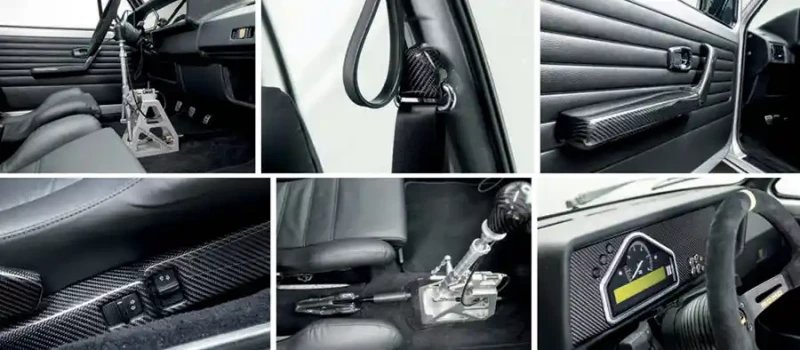
While Michael actually bought the shell around nine years ago, he didn’t actually do much with it for the first couple of years due to other commitments with home life. “I still remember driving from Holland with my friend Jeffrey to collect the shell from the UK — we did it in one day. I certainly wouldn’t do that again,” Michael went on; “when I told him, Marco was pleased to hear that the car was returning closer to home — he knew I had always loved the Mk1.”
The thing is, it wasn’t really ‘the’ complete car Michael had bought, it was just the shell. Okay, the carbon DTM mirror and carbon slam panel remained, as did the doors, handles, bonnet, bumpers, hatch, and glass, but that was about it. When asking him about the condition of the car, we were shocked to discover that Michael hasn’t actually painted the exterior. Yes, that’s right, what you see on these pages is the original paint from 1998!
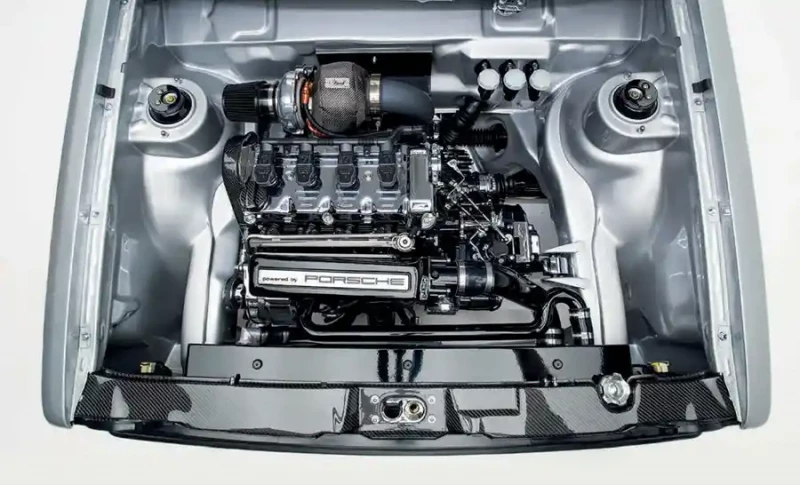
The same can’t be said for under the hood, though, as this is an area where Michael felt a few more improvements could be made before fitting the new engine. “While the bay was smoothed first time around, in my mind, there we still more holes that could be filled and smoothed, especially with what I had planned.” For example, the hole still remained in the scuttle for the heater (it had just been covered with a carbon plate before), there was still a hole for the wiring loom, the throttle cable and the brake servo. “To start with, we actually removed the car’s Mk2 servo and Big Ron actually fitted the bias pedal box from his infamous Mk1 VR6, welding in a fresh steel plate to fix the reservoir to.” After that, the shell actually went to Germany where Michael’s friend Philip filled the aforementioned holes, before the engine bay could finally be painted again.

It’s probably as good a time as any to mention that Michael is no stranger to cleaned VWs or the pages of PVW. His previous Mk2 Golf first got a cleaned VR6 turbo conversion, before Michael then swapped it to a super clean 1.8T swap in a smooth bay. Despite appreciating a cleaned car, Michael is very much all about driving his VWs, too.
When it came to the Mk1’s engine, Michael already had a 16v turbo motor which he was building to go in another Mk1 shell. “The engine was painted all black and I planned to fit that to a Manila Green shell, but then Marco’s car came along and it all changed.” “I decided, because the car was a legend, I needed to do a proper clean engine that was highly detailed, so I sold the S2 turbo and wastegate set-up and went for the Garret GT turbo with internal waste gate, which looks far cleaner under the hood.” The all-black theme of the engine then changed, as Michael went for a more fitting chrome and carbon look that obviously mimicked the original build somewhat.

According to Michael, the engine features so many custom parts it’s hard to remember them all: “Remco, at Non Standard, worked wonders fabricating the custom S2 inlet manifold with Porsche plate welded in place. Even before the it was powder-coated, the welds were just so smooth,” he admitted.
Initially, Michael bought a KMS ECU for the car, but after struggling to get it to run using the S3 fly-by-wire throttle, he switched to an EMU Black management system, which worked a treat: “After mapping we saw 260bhp, which is more than enough for what I want from the car. It wasn’t built for outright power, after all!”
The more you look around, the more you spot something different or custom that you didn’t notice first time around. The cnc’d bonnet hinges, for example, came rom Strove Motorsport in Holland and the one-off radiator, mounted to the custom intercooler was fabricated from a company in Michael’s hometown that he’s always used for projects. No less than three electric fans are mounted in front of the radiator to keep things cool when Michael is driving across Europe to attend shows.
The one thing Michael was keen to point out is that the underside is not quite as spotless or polished as when Marco built it. Let’s be honest, Marco hardly drove the car, so he could keep it spotless, whereas Mark had driven the car in the UK and Michael also intended to do the same. “I’ve already clocked up 3000 kilometres since it was finished a few months back. “I recently drove 1200 kilometres to a show in German and people asked whether I’d trailer it,” he smiled. That’s just not what Michael is all about.
When it came to wheels, obviously the original Ronal Turbos were long gone, but Michael had his eye on a set that were in keeping with that original set-up, but I guess just look things up a notch. “I’d seen that Thomas Müller in Germany had a set of 17” magnesium Ronal Racing Turbos splits, but he wanted top dollar for them. It took us six months to agree on a price that worked for us both, but they’re the best wheels for a Mk1” he laughed. “I did have it on 165 tyres before the 185s, but they were just dangerous,” he laughed.
As for suspension, Michael went with a set of shortened FK Yellow coilovers, which are similar to those used on his Mk2 in the past. You’ll also notice there is a pair of spherical bearing adjustable top mounts up front, which Michael informed us were custom made in Germany.
Now, it would be easy to look at this build and assume that Michael’s just changed the engine and wheels, fitted a CAE shifter, fancy dash and that’s it. But it’s only when you remember just how stripped this car was when he bought it that you fully appreciate how much he has done, even just to get the car back to ‘Marco’ spec.
Thankfully, as we said earlier, the distinctive single carbon DTM mirror and carbon CL lip spoiler remain, but that’s about it from the way Marco originally had the car. Back in the 90s, Marco’s creation was one of the first cars we’d featured with custom carbon fibre parts. Up until that point, we’d only ever seen the light, strong, and extremely expensive material used in motorsport. In fact, when we revisited the car in 2005, it had also been fitted with a full carbon-coated dashboard.
While the carbon dash was removed a long time ago when Mark had the car, Michael has since fitted his own custom Mk1 dash which has now been coated in black leather. A new Stack display has been set in a carbon-fibre surround, which replaces the car’s original analogue dials. The original VDO gauges and radio have also been removed and blanked off. All the other carbon parts inside the car have been commission by Michael, including a carbon-coated handbrake cover, handle, and release button, plus all the seat belt fixings, seat pulls, steering column cover, door rests, Beetle door handles and casings. The electric window switches, a USB port, light switches and boot release button all now live in the panel below the steering wheel.
Michael then managed to source a set of electric Corrado Recaro seats which have been retrimmed in black leather, along with the rear bench, to match the dash. “These are by far the most comfortable seats around”, according to Michael, although he’s not 100% with the trimming on these, so he plans to have them redone over winter.
A CAE shifter (with carbon gear-knob) now dominates the cockpit and In the place of the original, iconic Momo 280mm Team steering wheel is now a dished, three-spoke Momo 300mm MOD.08 steering wheel. This still has a retro motorsport feel to it with its suede finish and racey yellow centre strip.
Michael then removed the carpet from a Mk1 parcel shelf and painstakingly fibre-glassfilled the perforated surface, so that when coated in matching black leather it would appear perfectly smooth. The spare wheel well was finally removed and a steel plate bonded in its place. The battery now resides in the boot, housed in a custom fabricated metal box fixed to the rear strut brace.
We love the fact that despite making the car his own and spending a lot of time (and money) just adding the parts that were lost when the car was parted out, Michael hasn’t gone too overboard for the sake of it. He could have easily coated the bumpers, side trims, door handles and rear arch spats in carbon, but he resisted. “I was never too worried about making the car my own, or whether people called it Marco’s car. I just love owning it and using and taking it to shows to educate the new generation who weren’t aware of the car first time around.”
It goes without saying, that Michael never plans to sell the car. “My son actually loves cars, too, but his dream ride is currently a Mk4 Toyota Supra Turbo.” That’s still a pretty cool machine, but we reckon by the time he’s old enough to drive in a few years time, he’ll appreciate the Mk1 even more than he does today. Then, it will be that awkward conversation, asking whether he can take it out for a drive. I guess the next custodian being in the family wouldn’t be all that bad, right Michael? Time will tell, we guess.
DUB DETAILS1982 Volkswagen Golf Mk1
- ENGINE: 1.8-litre KR 16v four cylinder with Audi S2 rods and RS2 bearings, Wossner forged pistons, original head, 3” downpipe, Garret GT 28/60 RS turbo (in heat-proof cover) with integrated wastegate, 2.5” stainless exhaust system, custom pipework and intercooler/ radiator set-up, triple electric cooling fans, custom Audi S2 inlet manifold (with Porsche plate welded on) with Audi S3 8L drive-by-wire throttle body and coil packs, EMU Black management, chrome and polished detailing, power-coated and carbon-covered parts, chrome wire motor, heater and original servo removed, carbon front panel, fully smoothed engine bay.
- MAX POWER: 260bhp
- CHASSIS: 6.5x17” and 7x17” Ronal Racing ‘Turbo’ wheels with 18535 R17 tyres, shortened FK Yellow coilovers (using Koni shocks), adjustable top mounts (front), fixed rear strut brace with integrated battery case, Willwood bias pedal box (from Big Ron’s Mk1 VR6), G60 front brakes set-up with 16v out back
- EXTERIOR: Painted Mercedes brilliant silver, KPU single carbon DTM mirror, carbon CL lip spoiler, smoked front lights and indicators, single wiper conversion, smoothed scuttle, pulled arches, delocked door handles, carbon filler cap, badges, wiper and lock removed from tailgate, smoked rear lenses
- INTERIOR: Leather coated dashboard (with carbon panel featuring Stack display), Corrado electric Recaro seats and smoothed parcel shelf, CAE gear shifter, TT pedals, Momo 300mm MOD.08 steering wheel, carbon-coated handbrake cover, handle, and release button, plus all the seat belt fixings, seat pulls, steering column cover, interior mirror, door arm rests, Beetle door handles and casings. The electric window switches, a USB port, light switches and boot release button all now live in the panel below the steering wheel
- SHOUT: To all those who have helped on the car — you know who you are. Without friends, this hobby is nothing!
We last featured Marco's Mk1 on the cover of our 100th issue — PVW 2/05 (above left). It actually graced the cover for the first time way back in PVW 2/99 (above right) after we spotted it at Baarlo '98


